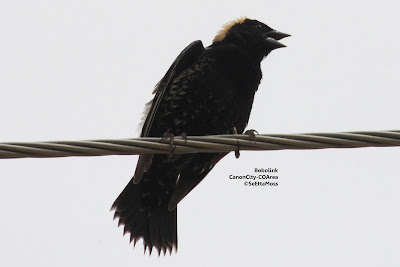Black Phoebe at nest: video clip
In this short video clip one of the Black Phoebe parent birds can be seen perched above and to the left of the nest, very obvious by it's frequent tail wagging. It then flies to the right where it catches an insect off-view and quickly returns to the nest to feed the 6-9 day old nestlings (same day as photos in post below). Video clip is best viewed in full screen format (click on box in far right-bottom corner of screen) SeEtta




